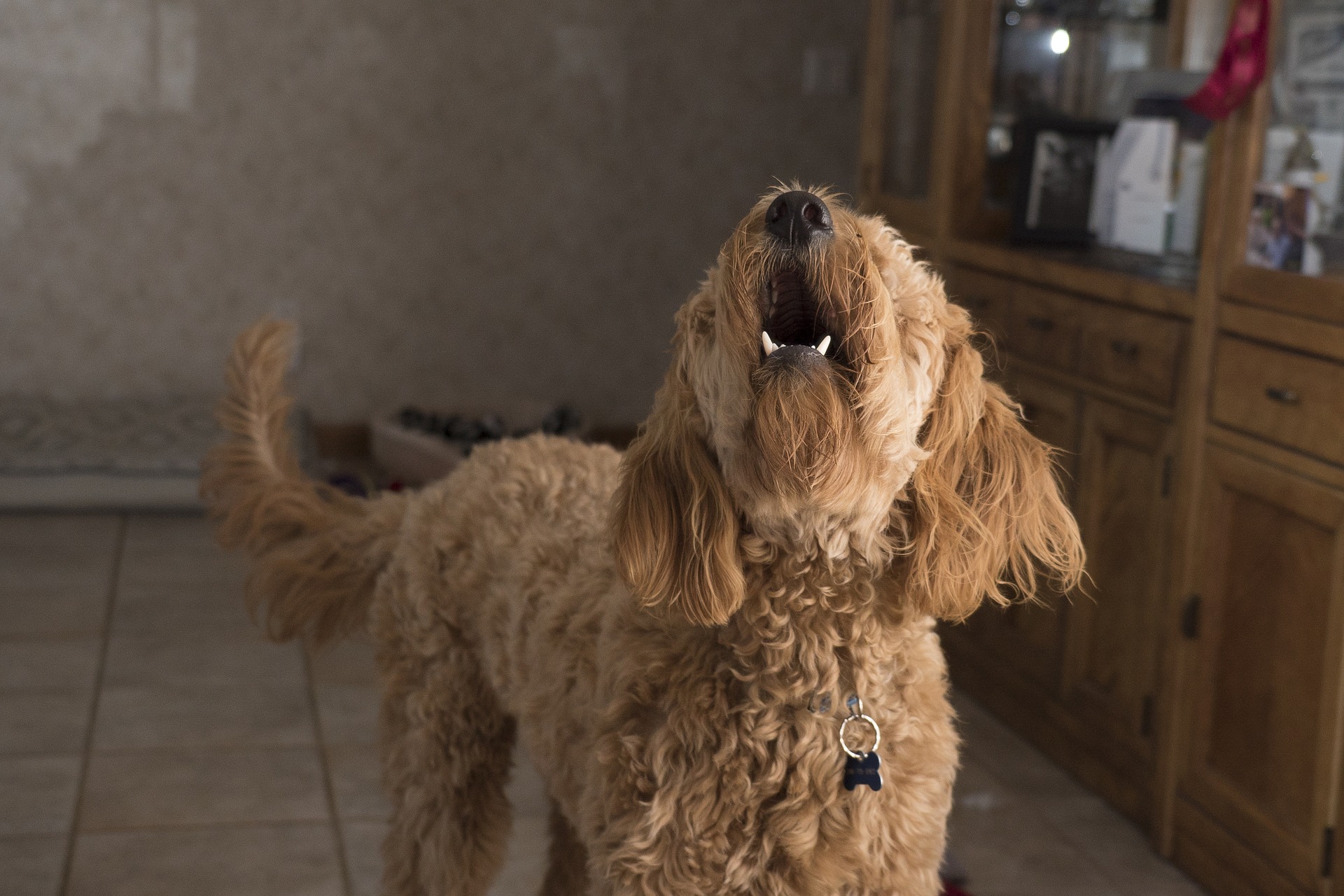“Speak” is a behavior with many uses and can also be a fun way to show your dog’s abilities. It can even save your life if you need to frighten off a potential intruder. You can build off of this skill to teach them to be quiet as well. Since barking is a natural behavior, this trick tends to be easy to teach and helps give you control over their barking to prevent them from doing it excessively.
Preparation: Have your clicker at the ready, along with treats of your choice. Starting with high-value treats is always helpful when teaching a new trick since your dog will be willing to concentrate and work hard for them. You’ll also need some trigger that gets your dog to bark; this could be a friend ringing your doorbell, a phone ringing, or having someone walk past outside.
Teaching “Speak”: You can choose any word for this command. Popular choices include “speak,” “bark,” or “talk,” but you can opt for something else if you want. Have yourself, or your friend create the stimulus. As soon as your pup barks, click once and give your vocal command. Provide a treat and provide them with praise! The bigger your reaction in these initial training sessions, the more quickly your dog will positively associate the behavior and the reward.
Repeat the process of triggering your dog to bark, marking their bark with a click and command, then rewarding them. You can also incorporate a hand signal as your dog gets better at associating the vocal cue with barking.
Teaching “Quiet”: If your dog is already an excessive barker, you may choose to first teach “quiet” before encouraging any additional barking. You can also call this cue “hush,” “enough,” or even something funny like “whisper” or “inside voice.”
Get your dog to bark using whatever stimulus works for them. Once they start barking, acknowledge what they are barking at so they know you heard them, then calmly grab a toy or treat. Use it to grab their attention. As soon as they stop barking and focus on you instead, click and reward them.
Gradually increase the time between when they stop barking and when you mark the behavior and give them the treat. This helps show them that you expect them to stay quiet and not just cease barking for a moment. Once they can stay quiet for a few seconds before getting the treat, incorporate your verbal cue as well. Verbal cues will be the most helpful in this situation. These cues will get your dog’s attention even if they aren’t looking at you. A hand signal will not be beneficial in most cases unless you are purposefully telling your pup to speak and then be quiet.
Over time, add distractions for your dog to work on both skills. Keep training sessions short, and only add in distractions once you feel confident your dog will be able to handle them.
A Few Final Thorughts
Keep in mind that these commands can’t be taught until your dog develops their bark. When working with a puppy, wait until they find their voice. Some dog breeds are not prone to barking or making sounds other than barking (Basenjis make a yodeling sound, for example).
Gulf Coast K9 Dog Training provides professional dog training services to dog owners throughout the Sarasota and Bradenton area. Whether puppy or mature dog, we can help with obedience training and playcare. Call today for more information.





